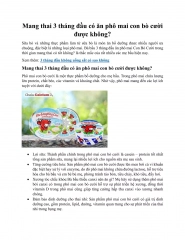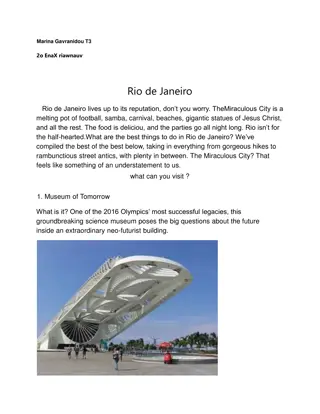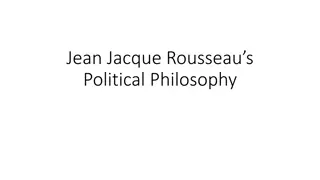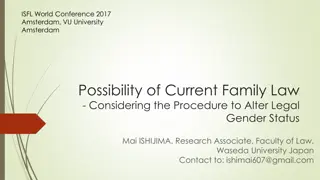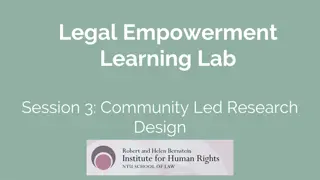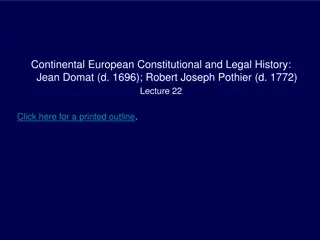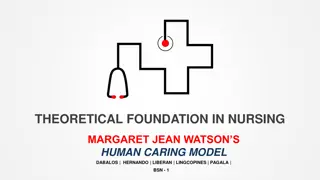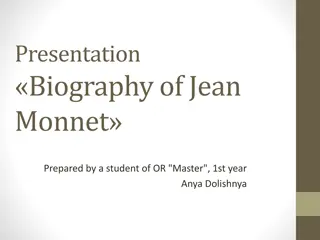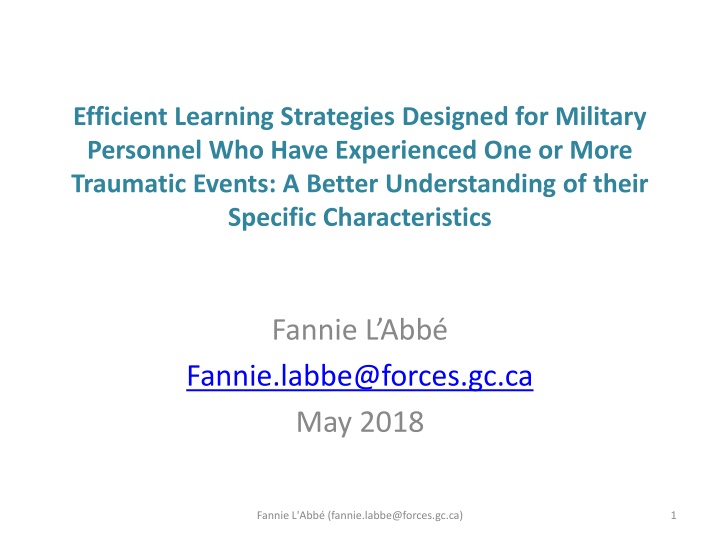
Efficient Learning Strategies for Military Personnel with Traumatic Experiences
Explore efficient learning strategies tailored for military personnel who have encountered traumatic events, focusing on the specific characteristics that influence their learning process. The presentation delves into the teaching context, challenges in second official language education, military students' traits, and factors that enhance their learning capabilities.
Download Presentation

Please find below an Image/Link to download the presentation.
The content on the website is provided AS IS for your information and personal use only. It may not be sold, licensed, or shared on other websites without obtaining consent from the author. If you encounter any issues during the download, it is possible that the publisher has removed the file from their server.
You are allowed to download the files provided on this website for personal or commercial use, subject to the condition that they are used lawfully. All files are the property of their respective owners.
The content on the website is provided AS IS for your information and personal use only. It may not be sold, licensed, or shared on other websites without obtaining consent from the author.
E N D
Presentation Transcript
Efficient Learning Strategies Designed for Military Personnel Who Have Experienced One or More Traumatic Events: A Better Understanding of their Specific Characteristics Fannie L Abb Fannie.labbe@forces.gc.ca May 2018 Fannie L'Abb (fannie.labbe@forces.gc.ca) 1
Presentation Overview 1. The teaching context 2. Issues with second official language education and training 3. Military students characteristics 4. What promotes their learning Fannie L'Abb (fannie.labbe@forces.gc.ca) 2
1. The Teaching Context Civilian employees Support roles Specialists Military members Support roles Specialists (doctors, lawyers, etc.) Warriors Leaders Fannie L'Abb (fannie.labbe@forces.gc.ca) 3
2. Issues with second official language education and training Canada s Official Languages Act (1969) Military members and operations: Domestic missions (the Olympic Games, defending Canada s sovereignty, floods, etc.) Combat missions (Afghanistan, Iraq, etc.) Peace-keeping missions (Rwanda, Bosnia, etc.) Humanitarian missions (earthquakes, hurricanes, tsunamis, etc.) Officer training missions (Afghanistan, Central Africa, the Congo, etc.) NATO missions (Germany, the Ukraine, etc.) Physical and mental injuries Including depression, traumatic brain injury (TBI) and post-traumatic stress disorder (PTSD) Fannie L'Abb (fannie.labbe@forces.gc.ca) 4
2. Issues with second official language education and training 2/3 of CAF members will not seek help (Fikretoglu, Brunet, Guay and Pedlar, 2007) Some are afraid that the information will end up in their file they will not be able to obtain a certain position or promotion and/or their superiors will treat them differently (Burke, Degeneffe and Olney, 2009) Fannie L'Abb (fannie.labbe@forces.gc.ca) 5
2. Issues with second official language education and training Definition CAF: According to DND, there are four main types of operational stress injury (OSI) following participation in a mission 1. Trauma 2. Fatigue 3. Grief 4. Moral injury (https://www.cfmws.com/en/aboutus/dcsm/osiss/pages/operati onal-stress-injury-social-support-(osiss).aspx/en/index.html) Fannie L'Abb (fannie.labbe@forces.gc.ca) 6
2.1 Operational Stress Injuries Fundamental assumptions 1. The world is benevolent, and everyone is fair, good and trustworthy 2. The world is meaningful, everything happens for a good reason, and for better or worse everyone gets what they deserve 3. Unrealistic thinking: That could never happen to me or We re invincible (Janoff-Bulman, 1992) Fannie L'Abb (fannie.labbe@forces.gc.ca) 7
2.1 Operational Stress Injuries Everyone deals with the stress associated with each of these events differently in accordance with their personal vulnerability factors. What works well for one person may not be suitable for another in terms of strategies for recovering from trauma Fannie L'Abb (fannie.labbe@forces.gc.ca) 8
2.2 Post-Traumatic Stress Disorder PTSD 1 to 14% of the general population Up to 58% of the victims of natural disasters and of military members who have seen combat action (Bouchard, Baus, Bernier and McCreary, 2010) Canada: 13% of deployed military personnel (McKay, 2012) United States: 14 to 19% of deployed military members have reportedly developed PTSD or depression (O Herrin, 2011) Fannie L'Abb (fannie.labbe@forces.gc.ca) 9
2.2 Post-Traumatic Stress Disorder According to several authors PTSD rarely occurs alone Depression is one of the concurrent diagnoses The risk of experiencing operational stress is greater when participation in combat is more direct, i.e. closer to the danger Military members who are indirectly involved in a traumatic event can also show symptoms of PTSD A feeling of survivor s guilt after witnessing a comrade s death Fannie L'Abb (fannie.labbe@forces.gc.ca) 10
2.2 Post-Traumatic Stress Disorder The difference between OSI and PTSD To develop PTSD the individual must have been exposed to death, serious injury or a threat to his or her physical integrity DSM-V: diagnostics Fannie L'Abb (fannie.labbe@forces.gc.ca) 11
2.2 Post-Traumatic Stress Disorder DSM-V 1) Those who directly experienced a traumatic event 2) Those who witnessed a traumatic event in person 3) Those who find out a family member or close friend has experienced a traumatic event (violent or accidental death) 4) Those who have personally and repeatedly experienced, or been exposed in an extreme way to, the graphic details of a traumatic event (not through the media, images, TV or movies unless it is related to their work) Fannie L'Abb (fannie.labbe@forces.gc.ca) 12
2.2 Post-Traumatic Stress Disorder The Amygdala: the only part of the brain activated in the event of fear or anger Danger signs quickly reach and alert the amygdala, the brain s fear system, while the cortex is still assessing them Classic conditioning Emotions respond faster than the ability to process information The amygdala receives the information 40 milliseconds before the more cognitive sections of the brain do (Bourrassa, 2006) Fannie L'Abb (fannie.labbe@forces.gc.ca) 13
2.2 Post-Traumatic Stress Disorder As per Bourrassa (2006), when dealing with a high level of stress your nervous system reacts primitively fight or flee your heart beats faster your breath speeds up and your body reacts in eight areas the five senses (hearing, sight, smell, touch and taste) three body responses (posture, movement and the sensation experienced) There is a changing sense of the passage of time (LCol Grossman, 2008) Isolated movements Focussed attention Survival instinct activated Fannie L'Abb (fannie.labbe@forces.gc.ca) 14
2.4 Operational Stress Management After a traumatic event People look for life lessons that can be drawn from it a positive impact in terms of changes caused positive or negative consequence of the event Why people look for those things It s a search for meaning to figure out why what happened happened to address their need to talk with others who have been through similar traumatic events, in order to find meaning in theirs Fannie L'Abb (fannie.labbe@forces.gc.ca) 15
2.4 Operational Stress Management The adaption process is influenced by personality traits Prevalence related to genetics Prevalence among certain people, such as women Prevalence among those who have taken part in several combat missions Reactions vary from one person to the next Vulnerability factors Depending on the person s experience-related baggage Cumulative traumatic events Fannie L'Abb (fannie.labbe@forces.gc.ca) 16
2.4 Operational Stress Management Resilience Natural human process characterized by positive actions during a stressful period Road to Resilience (2008) Humour, sublimation, denial, intellectualization and mentalization Possible ways of avoiding PTSD (Tychey, 2001) Fannie L'Abb (fannie.labbe@forces.gc.ca) 17
2.5 Symptoms of PTSD-Related Stress Significant impact on the victim s psycho-social abilities There are three overarching types of PTSD symptoms 1. Reliving, with daytime and night-time flashbacks: images, thoughts, sensory perceptions, intrusive memories 2. Persistently avoiding any stimuli associated with the traumatic event 3. Hyperarousal: signs of somato-psychic anxiety, trouble falling or staying asleep, extreme irritability, outbursts of anger, trouble concentrating, constantly on guard in any environment DSM-V criteria for making a diagnosis Fannie L'Abb (fannie.labbe@forces.gc.ca) 18
2.5 Symptoms of PTSD-Related Stress Dissociation One of the best indicators of acute stress An excellent predictor of PTSD [Translation] The dissociative symptoms are characterized by a lower level of consciousness and by heightened or numbed emotions, along with a feeling of detachment from one s environment. (Jehel and Guay, 2006) Fannie L'Abb (fannie.labbe@forces.gc.ca) 19
2.6 Impact of PTSD Symptoms on Learning o Reading skills o The ability to listen to a presentation and take notes simultaneously o Trouble concentrating when studying o The ability to plan, organize, prioritize goals and objectives and manage time o Memory problems o Learning strategies Fannie L'Abb (fannie.labbe@forces.gc.ca) 20
2.6 Impact of PTSD Symptoms on Learning PTSD can affect academic success Cognitive deficiencies Behavioural changes (MacLennan and MacLennan, 2008) Fannie L'Abb (fannie.labbe@forces.gc.ca) 21
2.6 Impact of PTSD Symptoms on Learning Those with PTSD develop low tolerance for frustrating, tense or stressful situations and therefore have problems with adapting to new things and changes in life They want to choose where they will sit in class, for example, and they refuse to sit in the seat that the teacher assigned to them Fannie L'Abb (fannie.labbe@forces.gc.ca) 22
2.6 Impact of PTSD Symptoms on Learning Generally speaking, PTSD victims can react to situations emotionally by getting angry and exhibiting impulsive behaviour withdrawing more or consuming alcohol, illegal drugs or medications such as anxiety-reducing drugs (Boyer, Guay and Marchand, 2006) Fannie L'Abb (fannie.labbe@forces.gc.ca) 23
2.6.1 Signs of PTSD in the Classroom 1. Hyperactive behaviour and problems with aggression, rage and impulsiveness 2. Cognitive signs, such as memory or information- retrieval problems, reliving the situation and flashbacks, concentration problems, trouble adapting to change, and dissociation 3. Emotional signs, such as withdrawal from the group, avoidance, shame, frustration and low self-esteem Fannie L'Abb (fannie.labbe@forces.gc.ca) 24
2.7 Learning and a Sense of Effectiveness In the context of FSL learning, a feeling of personal effectiveness can contribute greatly to the achievement of objectives (Horwitz, 1999; Magogwe and Oliver, 2007; Mizumoto, 2013; Noels, Pelletier and Vallerand, 2000; Yilmaz, 2010; Zare-ee, 2010) Fannie L'Abb (fannie.labbe@forces.gc.ca) 25
2.7 Learning and a Sense of Effectiveness Someone who has a greater sense of personal effectiveness experiences less psychological distress and fewer PTSD symptoms expects to be successful can resolve problems is able to overcome challenges and is able to manage stressful situations Fannie L'Abb (fannie.labbe@forces.gc.ca) 26
How can you promote second-language learning? Fannie L'Abb (fannie.labbe@forces.gc.ca) 27
6. What Promotes Second-Language Learning Motivation Age Learning problems Emotional filters Cultural filters Prior experience Anxiety about going back to school Military experiences OSI and PTSD Fannie L'Abb (fannie.labbe@forces.gc.ca) 28
6. What Promotes Second-Language Learning An inter-language system A language system created by the students in their second language that includes second-language learning and that provides authentic phrases to be used as models to imitate Fannie L'Abb (fannie.labbe@forces.gc.ca) 29
6. What Promotes Second-Language Learning Environment Try to create a healthy, friendly, approving, secure, respectful and understanding atmosphere focussed on needs and based on teamwork rather than competition Emotional factors Emphasize the importance of self-esteem Try to reduce or eliminate stressful conditions and the intensity of the associated emotional distress Cognitive factors Respect the diversity of learning strategies that the students may have Bilingual mind ERP Fannie L'Abb (fannie.labbe@forces.gc.ca) 30
6.1 The Most Common and Most Effective Learning Strategies Skills Learning Strategies 1. Reading 2. Basic knowledge 3. Writing 4. Conversing 5. Memorizing 6. Vocabulary 1. Social (74%) 2. Cognitive (71%) 3. Compensatory (69%) 4. Memorization (61%) 5. Metacognitive (60%) 6. Emotional(59%) Fannie L'Abb (fannie.labbe@forces.gc.ca) 31
6.1 The Most Common and Most Effective Learning Strategies 1.Tell: Contextualize, show the relevance, explain the meaning, provide a model, provide the rule, specify the standard 2. Show: Describe and explain the steps, illustrate how the model works in practice, describe each movement, transformation and movement 5. Teach: Communicate the new information acquired, describe the steps, redo the process 3. Go and Repeat: Do the exercise, act it out, work with others, self-assess, readjust, start over again and repeat 4. Confirm: Assess, achieve the objectives, accomplish the task Fannie L'Abb (fannie.labbe@forces.gc.ca) 32
The Memorization Process Processing and reinforcement: consistency with prior content and repetition Encoding: mental representation Retrieval: lexical accessibility (information available, but not always accessible) Fannie L'Abb (fannie.labbe@forces.gc.ca) 33
Merci! Thank you! Obrigado! Fannie L'Abb (fannie.labbe@forces.gc.ca) 34
Set learning goals Aim to reach a certain standard Use various methods for memorizing Change your methods if they don t work Organize the learning environment Limit interference Fannie L'Abb (fannie.labbe@forces.gc.ca) 35
Making associations (actions, stories, emotions) Drawing analogies Making diagrams and tables Telling Writing the essential information Seeing oneself in the future and imagining oneself doing it Working with the teacher Building up trust Listening to one s own needs Fannie L'Abb (fannie.labbe@forces.gc.ca) 36
Work in small groups to focus on the meaning of what needs to be memorized Act it out in authentic situations Put the words into context Take notes in class and review them Use all five senses (hearing, smell, sight, taste and touch) Fannie L'Abb (fannie.labbe@forces.gc.ca) 37
Secure environment (lighting, choose your seat in the classroom, know where the emergency exits are, limit background noise, no surprises) Exercise and oxygenation Lead a healthy lifestyle Breathing Exercise Sleep Relaxation Diet (calcium, phosphorus, magnesium, copper) o Avoid alcohol, tobacco and drugs Fannie L'Abb (fannie.labbe@forces.gc.ca) 38

